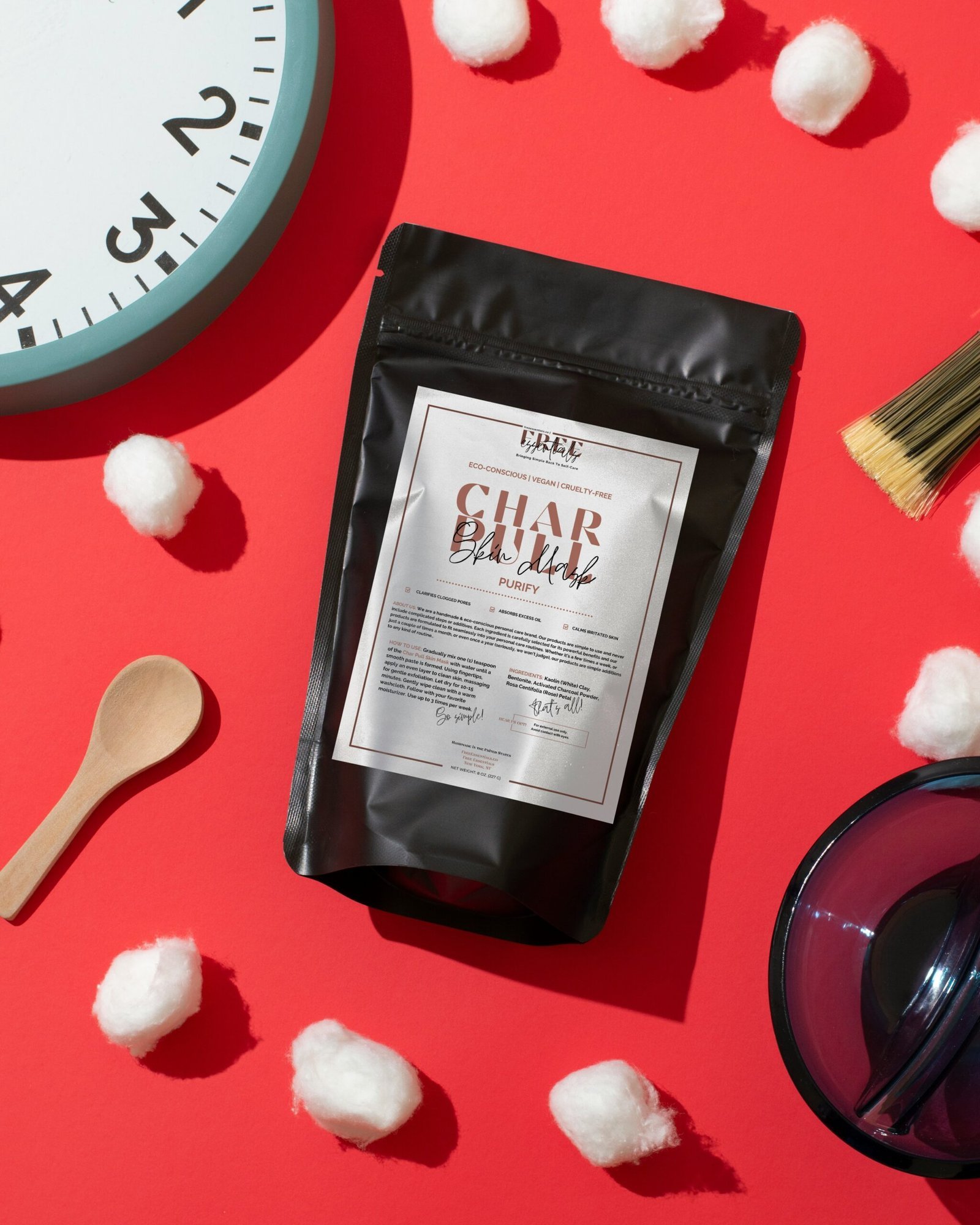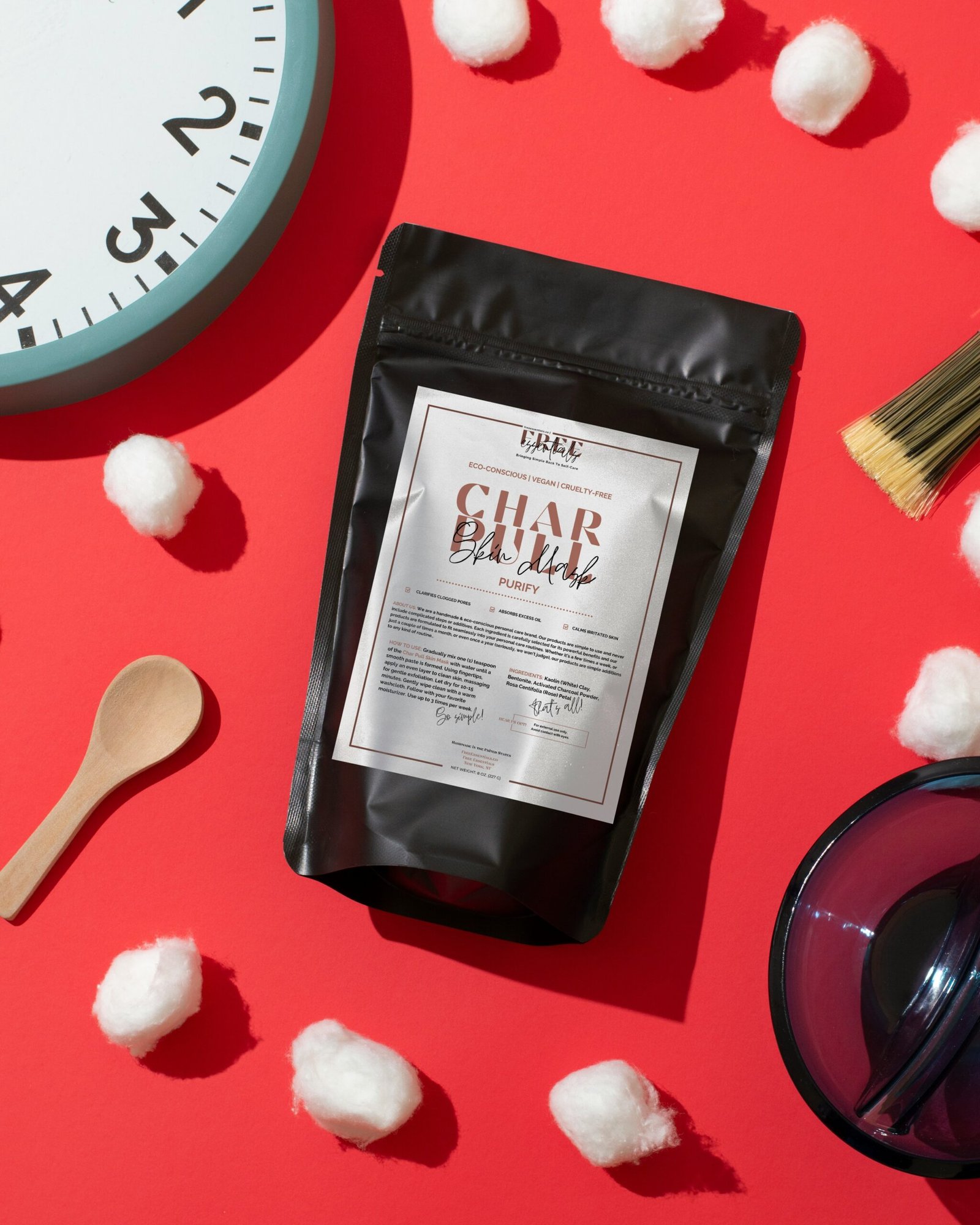
Introduction to Blocked Pores
Blocked pores are a common dermatological concern that can affect individuals of all ages. To fully comprehend this issue, it is essential to understand the fundamental anatomy of the skin. The skin is composed of several layers, with the outermost being the epidermis. Within these layers are numerous tiny openings known as pores. Pores play a critical role in maintaining skin health as they allow the secretion of sweat and sebum, an oily substance produced by sebaceous glands.
Sebaceous glands are located within the hair follicles and are responsible for producing sebum, which helps to keep the skin moisturized and protected. However, when these glands produce excess sebum, or when dead skin cells accumulate, pores can become clogged. This blockage prevents the natural flow of sebum, leading to the formation of various skin blemishes.
The most recognizable symptoms of blocked pores include blackheads, whiteheads, and acne. Blackheads, or open comedones, occur when a pore is clogged with sebum and dead skin cells, and the contents are exposed to the air, oxidizing and turning dark. Whiteheads, or closed comedones, form when the clogged pore remains closed at the surface, creating a small white bump. Acne, a more severe manifestation, involves inflammation and bacterial infection of the blocked pores, leading to red, swollen, and sometimes painful lesions.
Understanding the underlying causes and symptoms of blocked pores is crucial for effective treatment and prevention. Factors such as hormonal changes, improper skincare routines, and environmental pollutants can exacerbate the issue. By identifying these contributing elements, individuals can take proactive steps to maintain clear and healthy skin.
Causes of Blocked Pores
Blocked pores are a common skin concern resulting from a combination of internal and external factors. One of the primary causes is excess oil production. The skin naturally produces sebum to keep itself moisturized, but an overproduction can lead to clogged pores. This situation is often exacerbated by dead skin cells that accumulate on the surface of the skin. When these dead cells are not properly sloughed off, they can mix with the excess oil and create blockages.
Bacteria also play a significant role in the formation of blocked pores. The presence of bacteria like Propionibacterium acnes can lead to inflammation and infection, further complicating the issue. External factors such as pollution and makeup can also contribute to blocked pores. Pollution particles and makeup residues can settle on the skin, mixing with oil and dead cells, creating an ideal environment for pore blockages.
Skincare products, although designed to improve skin health, can sometimes be a double-edged sword. Products that are too heavy or not suitable for your skin type can clog pores. It is essential to choose non-comedogenic products, which are specifically formulated not to block pores, to mitigate this risk.
Hormonal changes are another significant factor. Fluctuations in hormone levels, particularly during puberty, menstruation, pregnancy, and menopause, can increase oil production, leading to blocked pores. Additionally, diet plays a crucial role. Foods high in sugar and dairy have been linked to increased sebum production and can exacerbate skin issues, including blocked pores.
Understanding these causes is the first step in effectively treating and preventing blocked pores. Addressing both internal and external factors can help maintain clear, healthy skin.
Types of Blocked Pores
Blocked pores manifest in various forms, each with distinct characteristics and underlying causes. Understanding these differences is crucial for effective treatment and prevention.
Blackheads (Open Comedones): Blackheads are small, dark spots that appear on the skin’s surface. They occur when hair follicles become clogged with dead skin cells and sebum, an oily substance produced by sebaceous glands. The open nature of these comedones allows oxidation, leading to their characteristic black color. Blackheads are commonly found on the nose, forehead, and chin. They are generally non-inflammatory but can lead to further complications if not addressed.
Whiteheads (Closed Comedones): Whiteheads are similar to blackheads in that they are caused by clogged hair follicles. However, in this case, the follicle opening is closed, trapping the debris beneath the skin. This results in small, white or flesh-colored bumps. Whiteheads are more likely to cause inflammation than blackheads and can develop into more severe forms of acne if not properly managed.
Papules and Pustules: When clogged pores become irritated and inflamed, they can develop into papules or pustules. Papules are small, red, raised bumps on the skin that do not contain pus. Pustules, on the other hand, are similar in appearance but are filled with pus, making them look white or yellow at the center. Both types indicate an inflammatory response and can be painful to the touch.
Cystic Acne: The most severe form of blocked pores is cystic acne. This condition is characterized by large, painful, pus-filled cysts that form deep within the skin. Cystic acne is often caused by a combination of factors, including hormonal imbalances, genetic predisposition, and severe bacterial infections. This type of acne can lead to significant scarring and requires medical intervention for effective treatment.
Visual aids or diagrams illustrating these different types of blocked pores can be highly beneficial for readers. Such tools can help in recognizing the specific condition they may be dealing with, thus guiding them towards appropriate treatment options.
Prevention Strategies
Preventing blocked pores is essential for maintaining healthy, clear skin. Implementing a consistent and effective daily skincare routine is the cornerstone of pore prevention. This routine should include three fundamental steps: cleansing, exfoliating, and moisturizing. Proper cleansing removes dirt, oil, and makeup that can accumulate throughout the day. Opt for gentle, non-comedogenic cleansers that do not clog pores. It’s crucial to cleanse your face twice daily, in the morning and before bed, to keep pores clear and reduce the risk of blockages.
Exfoliation is another key step in preventing blocked pores. Regular exfoliation helps to remove dead skin cells that can accumulate on the skin’s surface and inside pores, leading to blockages. Choose a mild exfoliant, such as a scrub with small, smooth particles or a chemical exfoliant containing alpha hydroxy acids (AHAs) or beta hydroxy acids (BHAs). Aim to exfoliate one to three times per week, depending on your skin type and sensitivity, to maintain a smooth and clear complexion.
Moisturizing is essential to keep the skin hydrated and balanced. Even if you have oily skin, skipping this step can lead to increased oil production and subsequent pore blockage. Select a lightweight, non-comedogenic moisturizer that provides hydration without clogging pores. Ingredients such as hyaluronic acid and glycerin are excellent for maintaining moisture balance.
In addition to a solid skincare routine, using non-comedogenic products is vital. These products are specifically formulated to not block pores, making them ideal for all skin types, particularly those prone to acne or congestion. Always check product labels for “non-comedogenic” to minimize the risk of blocked pores.
Maintaining a balanced diet can also influence the health of your skin. A diet rich in fruits, vegetables, lean proteins, and whole grains supports overall skin health. Avoiding excessive intake of sugary and greasy foods can help reduce excess oil production, which in turn helps keep pores clear.
Finally, be mindful of common triggers that can contribute to blocked pores. Avoid touching your face frequently, as this can transfer bacteria and oils from your hands to your skin. Using harsh skincare products can strip the skin of its natural oils, prompting increased oil production and potential pore blockages. Opt for gentle, skin-friendly formulations to maintain a healthy skin barrier.
Home Remedies and Natural Treatments
Blocked pores can be a persistent issue, but various home remedies and natural treatments can provide significant relief. Employing ingredients such as honey, tea tree oil, and aloe vera, these treatments offer a gentle yet effective way to cleanse and soothe the skin.
Honey: Known for its antibacterial properties, honey can help unclog pores while providing essential moisturization. To use honey as a treatment, apply a thin layer of raw honey to your face and leave it on for about 15-20 minutes before rinsing with warm water. This simple mask can be done daily or a few times a week to maintain clear skin.
Tea Tree Oil: Tea tree oil is another powerful natural remedy due to its antimicrobial and anti-inflammatory properties. To use it effectively, dilute a few drops of tea tree oil in a carrier oil like jojoba or coconut oil. Apply the mixture to the affected areas using a cotton ball. This treatment can be used once or twice a day, but it’s essential to do a patch test first to ensure your skin does not react adversely.
Aloe Vera: Aloe vera is renowned for its soothing and healing properties. It can help reduce inflammation and redness while also hydrating the skin. To use aloe vera, extract the gel from a fresh aloe leaf and apply it directly to your face. Leave it on for about 10-15 minutes before rinsing with lukewarm water. This can be done daily for optimal results.
Incorporating these natural remedies into your skincare routine can make a significant difference in managing blocked pores. By using these ingredients, you can cleanse your skin effectively while avoiding harsh chemicals that can sometimes exacerbate the issue. Always remember to be consistent with these treatments and pay attention to how your skin responds, adjusting your regimen as needed.
Over-the-Counter Treatments
Over-the-counter (OTC) treatments offer a practical and accessible solution for managing blocked pores. Products designed to combat blocked pores typically include active ingredients such as salicylic acid, benzoyl peroxide, and retinoids. Each of these ingredients functions differently, providing a range of benefits and potential side effects.
Salicylic acid is a beta hydroxy acid (BHA) known for its ability to exfoliate the skin and penetrate deeply into the pores. It works by dissolving the debris that clogs pores, making it particularly effective for treating blackheads and whiteheads. Common side effects may include dryness and irritation, which can be minimized by starting with a lower concentration and gradually increasing as the skin adjusts. Products like Neutrogena Oil-Free Acne Wash and Paula’s Choice Skin Perfecting 2% BHA Liquid Exfoliant are well-regarded options containing salicylic acid.
Benzoyl peroxide is another potent ingredient commonly found in OTC treatments. It works by killing bacteria that contribute to acne formation and reducing inflammation. While benzoyl peroxide is highly effective, it can cause dryness, redness, and peeling. Users should begin with a lower concentration, such as 2.5%, to gauge their skin’s tolerance. Notable products include La Roche-Posay Effaclar Duo Dual Action Acne Treatment and Clean & Clear Persa-Gel 10 Acne Medication.
Retinoids, derivatives of vitamin A, are renowned for their ability to promote cell turnover and prevent pore blockages. They are effective for treating a variety of acne types, including comedonal acne. Retinoids can initially cause dryness and irritation, so it’s advisable to introduce them slowly into a skincare routine. Popular OTC retinoid products include Differin Gel (Adapalene 0.1%) and The Ordinary Retinol 0.5% in Squalane.
To incorporate these treatments effectively into a skincare routine, start with cleansing the skin thoroughly. Follow with the application of the chosen treatment, ensuring even coverage over affected areas. Moisturizing afterward can help mitigate potential dryness and irritation. Consistency and patience are key, as it may take several weeks to observe noticeable improvements.
When to See a Dermatologist
Blocked pores can often be managed with home remedies and over-the-counter treatments. However, there are certain signs that indicate it’s time to seek professional help. If your blocked pores persist despite consistent home care, it may signal a need for dermatologist intervention. Additionally, if you experience severe acne, painful cysts, or significant skin irritation, these could be indicators that standard treatments are insufficient.
Over-the-counter treatments may not always be effective, especially if the underlying issue is more complex. In such cases, it is advisable to consult a dermatologist who can offer a range of specialized treatments. Prescription medications, for instance, can be more potent and targeted compared to over-the-counter options. Chemical peels are another option that can help exfoliate the skin more deeply, removing dead skin cells and unclogging pores. Laser therapy is also available for more stubborn cases, offering a precise method to target and treat blocked pores.
Preparing for a dermatologist visit is crucial for a productive consultation. Start by noting any treatments you have tried, including medications and skincare routines. Also, make a list of questions or concerns you have regarding your skin condition. This preparation will help the dermatologist understand your situation better and tailor a treatment plan that suits your needs.
During the visit, expect a thorough skin examination, which may include a discussion about your medical history and lifestyle habits. The dermatologist might also perform tests to identify the root cause of your blocked pores. Based on the findings, you will receive a customized treatment plan that may include prescription medications, in-office procedures, or lifestyle recommendations.
Seeing a dermatologist can provide targeted and effective solutions for blocked pores, especially when home treatments fall short. Professional guidance ensures that you receive the most appropriate and effective care, paving the way for healthier, clearer skin.
Long-Term Skin Care Tips
Maintaining clear and healthy skin over the long term requires a consistent and adaptable skincare routine. It is crucial to tailor your regimen to your specific skin type and to be responsive to changing environmental conditions. Regular cleansing, exfoliating, and moisturizing form the cornerstone of any effective skincare regimen. Cleansing helps in removing dirt and oil buildup, while exfoliation aids in shedding dead skin cells that can clog pores. Moisturizing ensures that the skin remains hydrated and prevents excessive dryness, which can lead to irritation and breakouts.
Beyond daily routines, lifestyle habits play a significant role in skin health. Adequate hydration is essential; drinking enough water helps to flush out toxins and keeps the skin plump and radiant. Managing stress is equally important, as high stress levels can trigger hormonal imbalances leading to skin issues such as acne and inflammation. Incorporating stress-relief practices such as yoga, meditation, or even regular exercise can contribute to healthier skin. Additionally, getting sufficient sleep is vital, as the skin repairs itself during the night. Aim for at least seven to eight hours of quality sleep to support the skin’s natural regeneration processes.
Staying informed about new skincare research and trends can also be beneficial. Innovations in skincare ingredients and methods are continually emerging, offering potential improvements in the treatment of blocked pores and overall skin health. However, it is important to approach new trends with caution and consult a dermatologist before incorporating new products into your routine. Skin care is not a one-size-fits-all approach, and professional guidance can help in making informed decisions.
Consistency is the key to long-term skin health. By maintaining a dedicated skincare routine, adapting it to your skin’s needs, and incorporating healthy lifestyle habits, you can effectively manage blocked pores and enjoy clear, glowing skin.


